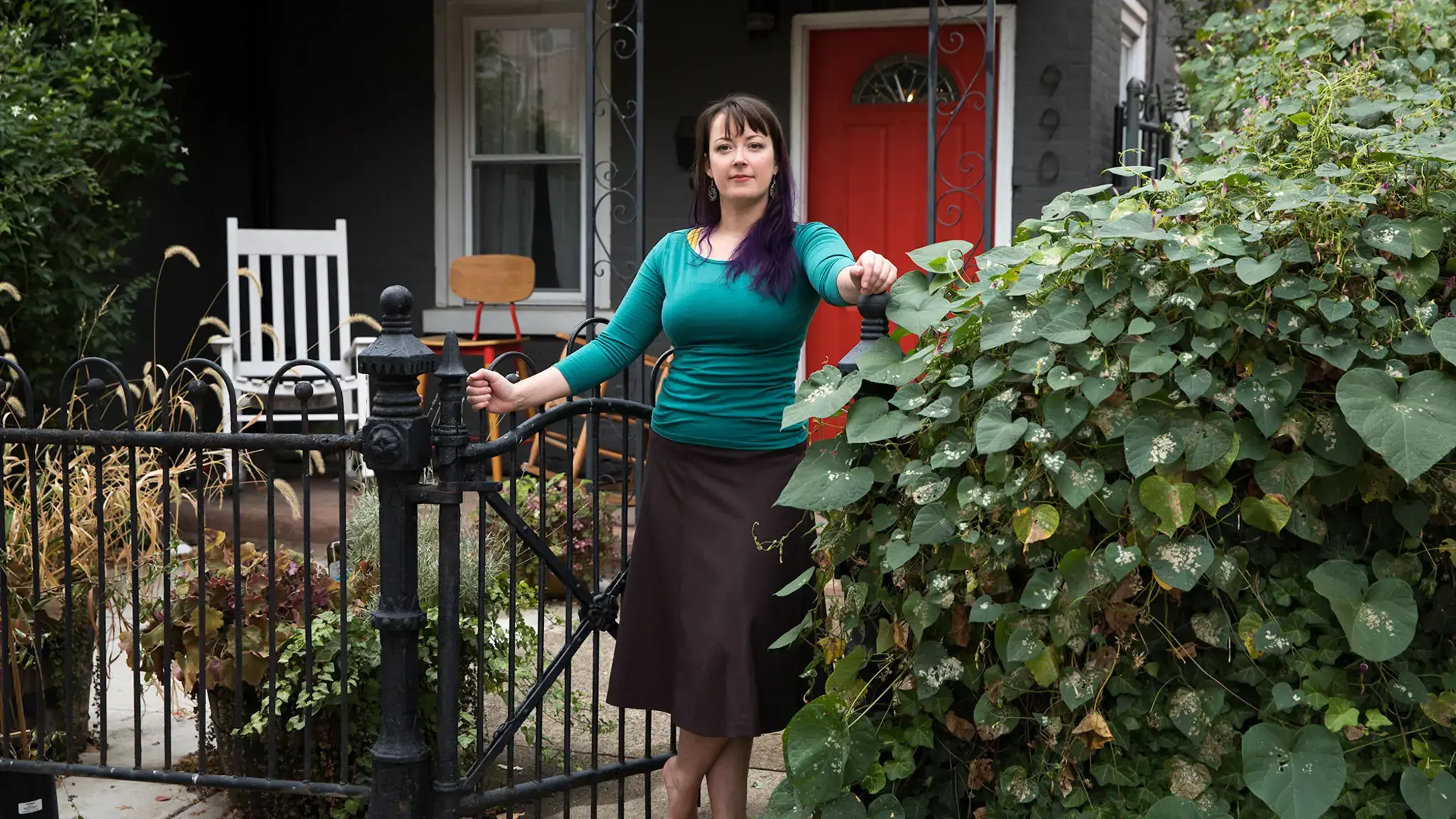Our “Pew Fellow of the Week” series focuses on the artistic lives of our Pew Fellows: their aspirations, influences, and creative challenges.
This week, we speak to Annie Wilson (2017), a choreographer and performer whose work intertwines experimental dance, humor, feminist practice, and audience interaction. Investigating what she describes as “public vulnerability and intimacy,” Wilson is interested in expanding the definition of dance and drawing from different realms of culture, such as standup comedy, burlesque, viral videos, and DJ remixes. A 2014 Independence Foundation Fellowship recipient, Wilson is currently an “incubated artist” at Headlong and a writer for Thinking Dance. Her most recent work, At Home with the Humorless Bastard (2016)—an exploration of personal and collective grief that shifts the audience’s perspective by bringing them onstage and casting them in a story—will be on stage at JACK in New York City, March 29–31, 2018.
In your work, you strive to, as you put it, “enliven that which is actively repressed in public life: grief, empathy, emotional honesty, and the experience—instead of appearance—of the female body.” Can you expand on this sentiment? What do you hope audiences take away from experiencing your work?
Obviously I can’t predetermine what audiences will take away from my work. But I try to have each moment embedded with a variety of ideas, hopes, questions, and efforts that an audience can nibble on. I’ve found myself drawn to art that expresses something living in me that I didn’t even realize had been living there all along, or that I did know lived there, but didn’t know how to articulate. In a time when the continuum of public and private life is shifting so much, I want my work to draw into the light that which keeps getting repressed.'
What was the first work of art that really mattered to you? Did it influence your approach to your work?
This question really sent me down an existential spiral! There is one particular moment I had in college that has stayed with me, and that’s of watching Robot Chicken on Adult Swim for the first time. I don’t remember the episode or really much about the show in general. What I do remember is that the frenetic pace and schizophrenic content felt more contemporary to me than the values I was learning while earning a $100k BFA in Modern Dance. That moment unlocked a whole world of making for me where I had permission to shove as many impulses into a dance as I wanted, at whatever pace I wanted; where no one idea was more worthy of a dance than another; where I could follow what made me laugh as opposed to what was taken seriously.
If you could collaborate with anyone alive today, who would it be?
There are many artists I don’t know personally whose work I admire very much. More importantly, I love my current collaborators. The relationships I have with my network of collaborators have been cultivated over many years of experiments, playdates, failures, mistakes, boring rehearsals, shared meals, fights, and small opening-night gifts. Those relationships mean unimaginably more to me than my admiration for any stranger’s artwork. I am sure as I work on new projects I will engage with new collaborators, but to answer the question, no, I don’t have a collaborative fantasy because my collaborative real-life kicks such butt.
What music are you listening to and/or which books are on your bedside table?
Parable of the Sower, The Spell of the Sensuous, Precarious Life, andThe Tin Drum. I saw Thee Oh Sees live in September in Philadelphia and it was sublime.
What is your biggest motivator as an artist? What is your biggest fear?
Biggest motivator and fear: fear of death. Also a life-long social anxiety that drives me to create entire worlds where I call the shots.
Why do you choose to work and live in Philadelphia? In your experience, what makes this arts scene distinctive?
I moved to Philadelphia to go to school because I wanted to learn a variety of dance styles and live in a city with a diversity of people. I stayed in Philadelphia because the small companies and independent artists living here were so inspiring, talented, thoughtful, creative, and driven. What definitely made the arts scene distinctive then was the broad support for artists at all levels—from the large arts institutions down to emerging, or even established, independent artists.









